AI in sports medicine offers tailored rehab plans for athletes. It cuts injury risks and helps them recover faster. Wearable tech and smart algorithms linked with AI play key roles in predicting injuries and enhancing athlete care. AI transforms orthopedic and sports medicine in ways we previously only imagined.
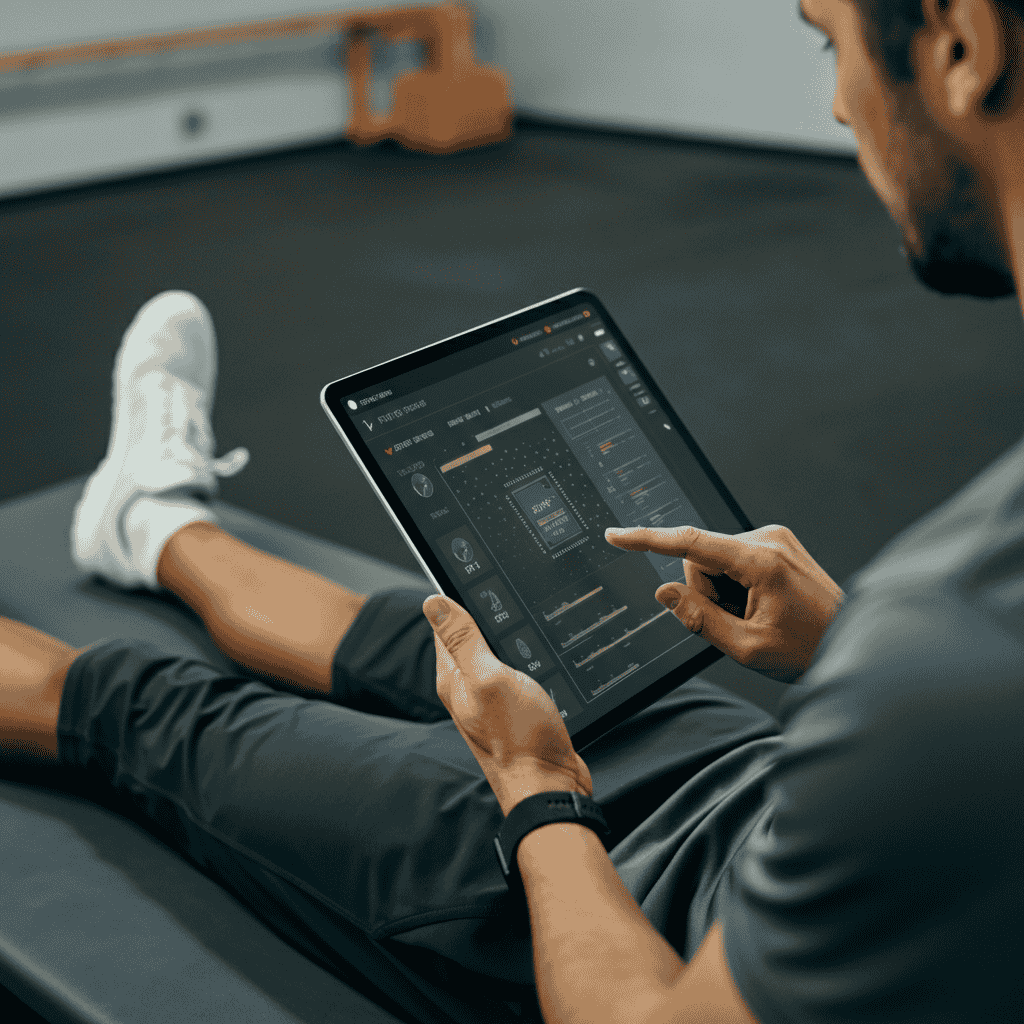
The Future of Sports Medicine: How AI is Revolutionizing Athlete Recovery and Rehabilitation
Even though I’m involved in the actuality of sports medicine, I saw the remarkable influence of AI on our field myself. The merging of artificial intelligence (AI) into sports has redefined the way we look at athlete care, injury prevention, and rehabilitation. In this article, I will share my experiences and insights on how AI is shaping the future of sports medicine.
Understanding Artificial Intelligence in Sports Medicine
AI in sports medicine pertains to the operation of pc systems that are known for automatic actions through which the human brain functions. I have watched AI scrutinize endless data sources on player performances, study probable injury dangers, and then design optimal training programs.
The capabilities of AI to manage and decipher complicated data sets outweigh what the human brain can do, thus offering unequaled insight into the health and performance of athletes. By leveraging AI algorithms, we can improve recovery time and reduce the risk of injuries, making this integration of AI a game-changer in the context of sports medicine.
What is AI and Its Role in Sports?
In sports, AI is evolving from being merely a data processor to becoming a part of the decision-making processes; thus, it becomes the linchpin in the accuracy and speed at which sports care is delivered.
In my case, I found AI to be an optimum companion in the difficult task of understanding the needs of professional athletes, who in turn receive care from musculature stress to medical intervention that forestalls further complications. AI can provide valuable insights into athlete care and ensure that AI models deliver optimal recovery plans for injured athletes.
Benefits of Artificial Intelligence for Athlete Care
In the way I function, I find AI indispensable in constructing perfect treatment plans in a personal manner. On the other hand, AI detects movement nuances that indicate a developing injury before the symptoms show. This early recognition capability has enabled us to apply proactive measures, thereby shortening the duration of the recovery from more fatal injuries and lowering the likelihood of such injuries.
AI helps by analyzing data collected from wearable devices and generating personalized treatment plans to optimize an athlete’s recovery progress. The role of artificial intelligence in ensuring faster recovery times is undeniable.
AI’s Impact on Injury Risk Assessment and Prevention
The implementation of AI has essentially affected the way we assess and prevent injuries. AI technology is efficient at spotting hazards that may be accidentally overlooked by a doctor.
Moreover, it can establish trends and relationships by sorting out the data sent by wearable devices, medical scans, and performance metrics, besides analyzing their meaning through AI. By predicting potential injuries, AI can help reduce the risk of future injuries and ensure optimal outcomes.
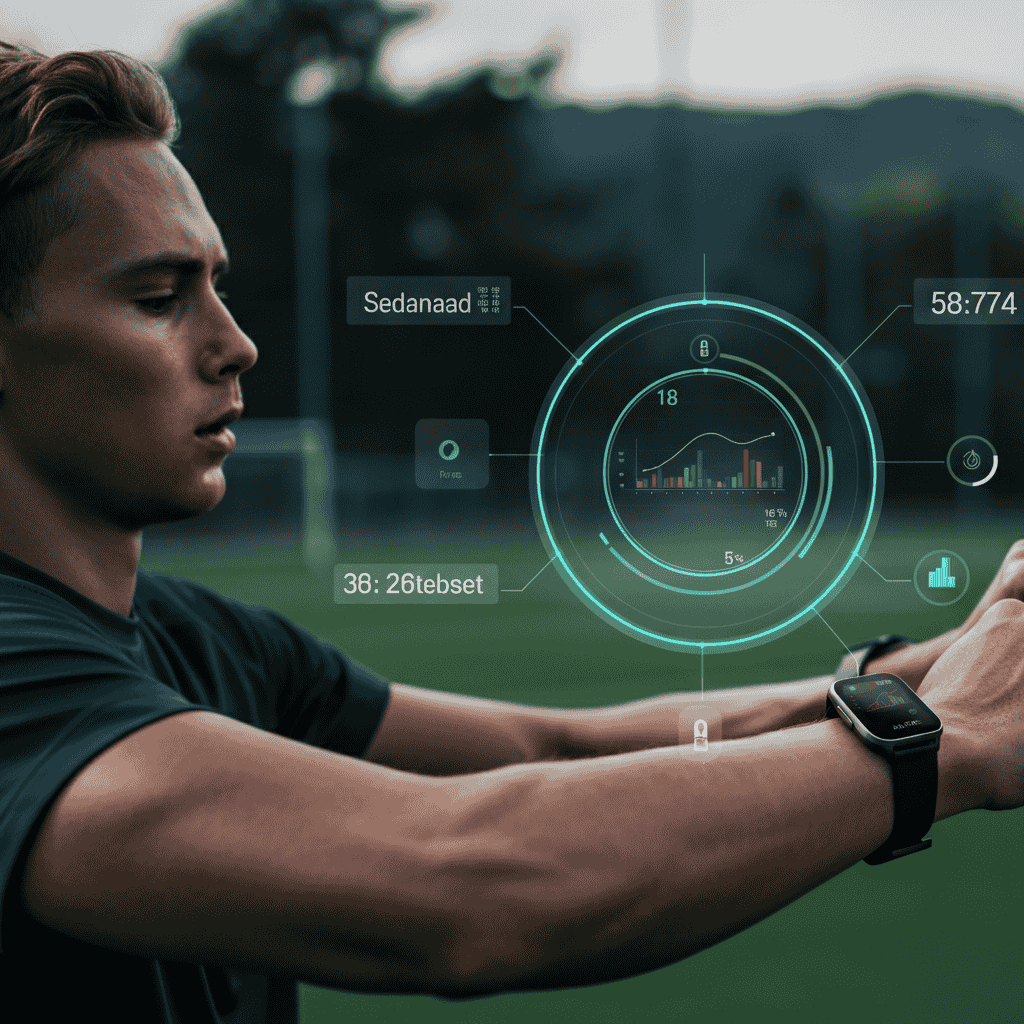
For example, I was once approached by a high-level soccer player who continually experienced hamstring injuries. With the help of AI to track his motion patterns and muscle fatigue levels, we could point out the affected points and prescribe specific exercises that were instrumental in his injury reduction. This proactive approach showcases the impact of AI in minimizing the risk of injuries and improving recovery.
Predicting Injury Risks with Artificial Intelligence
The models developed by AI can delve into a diverse range of issues (from genetics, biomechanical data, and environmental stresses) and can predict injuries with extreme accuracy.
In one specific case, our AI system anticipated the likelihood of injury to the basketeer and was thus instrumental in the application of the necessary corrective exercises. AI has the potential to reshape the practice of orthopedics and injury prevention in sports by ensuring athletes experience faster recovery times and return to their sport safely.
Creating Personalized Injury Prevention Plans
A particularly interesting effect of AI in sports medicine is the development of a training program that is individually designed using computer intelligence. The methods could be related to certain kinds of exercise schedules, nutrition practices, and textures of therapies that are required by each athlete according to the specificities and choices they bring to the bowl.
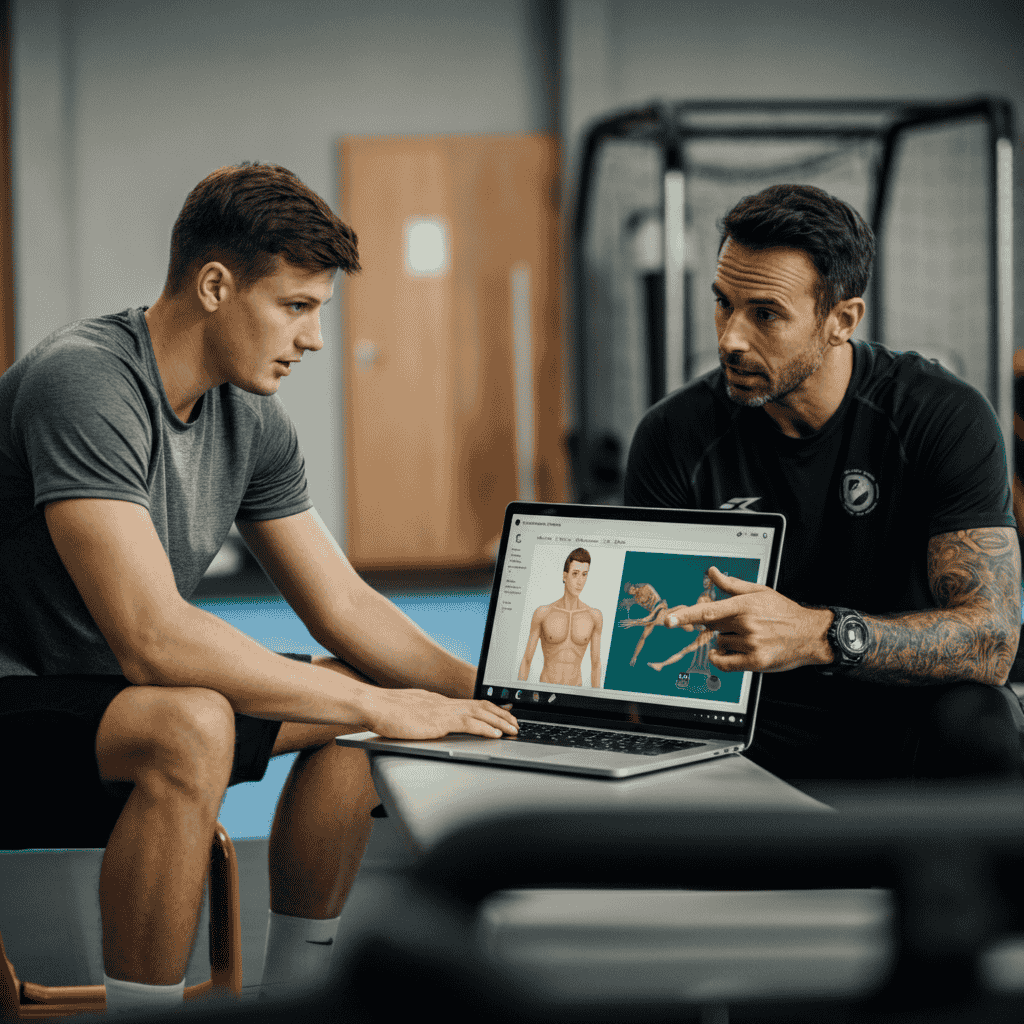
AI can adapt these plans as it learns more about the athlete’s recovery progress and optimizes their performance. This personalized approach not only reduces the risk of future injuries but also ensures that athletes return to their sport in peak condition.
AI-Powered Recovery and Rehabilitation in Sports Medicine
The method AI employs in the design and supervision of rehabilitation and recovery programs is groundbreaking. The AI-prepared tools make it easy for me to follow up on the progress of athletes in real time and to step in and modify their treatment by the time it changes.
By harnessing the power of AI, we can create rehabilitation plans that are tailored to the athlete’s specific needs, ensuring faster recovery times and optimal rehabilitation outcomes.
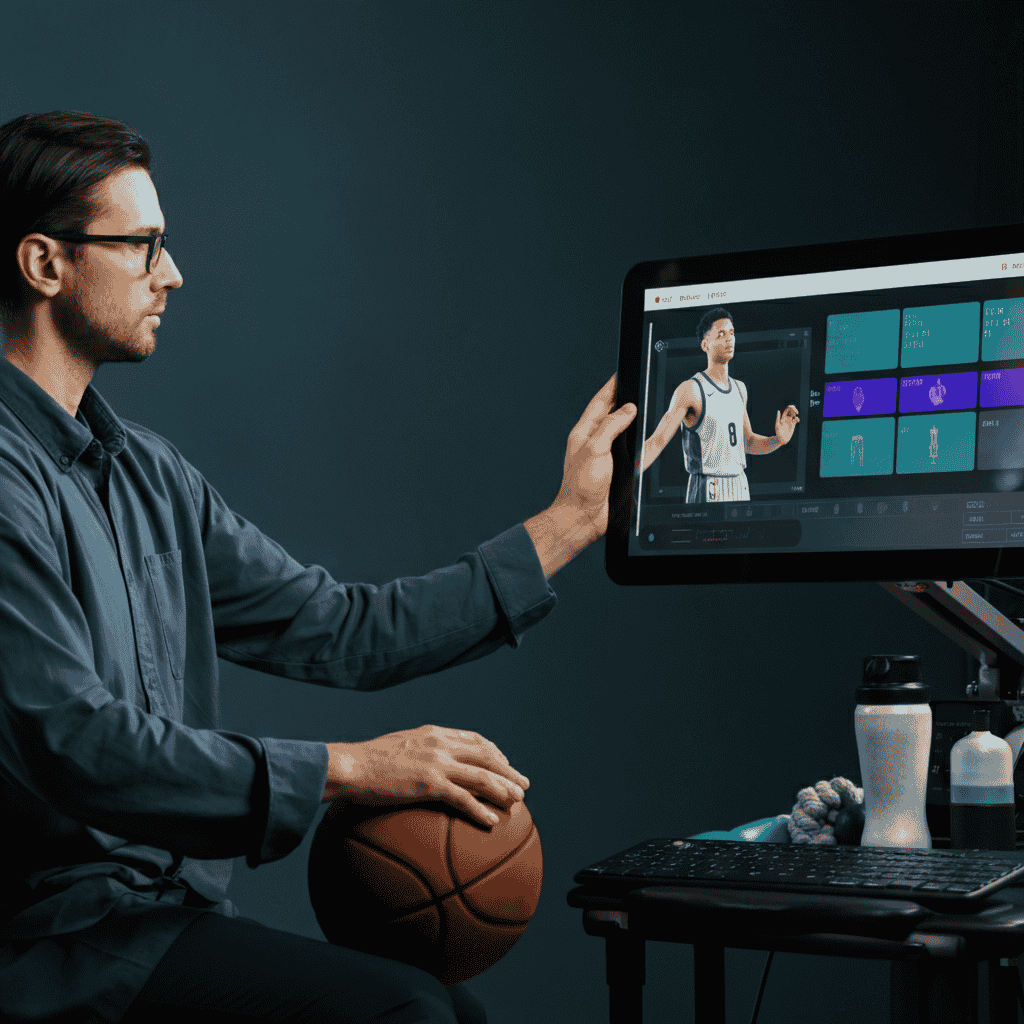
One scenario stands out in my mind—a case where a professional basketball player tore his ACL in a game. We applied AI to look at his mobility, and that not only helped us adjust his rehab program but also left a mark on the runners and any risk of re-injury.
AI offers smart recovery plans for athletes, enabling them to return to sport more quickly and safely.
Smart Recovery Plans for Athletes
AI-based intelligent recovery plans have become a central part of my job. These pathways use wearables to transmit instrumental data that help me monitor the physiological processes of athletes such as recovery and exercise.
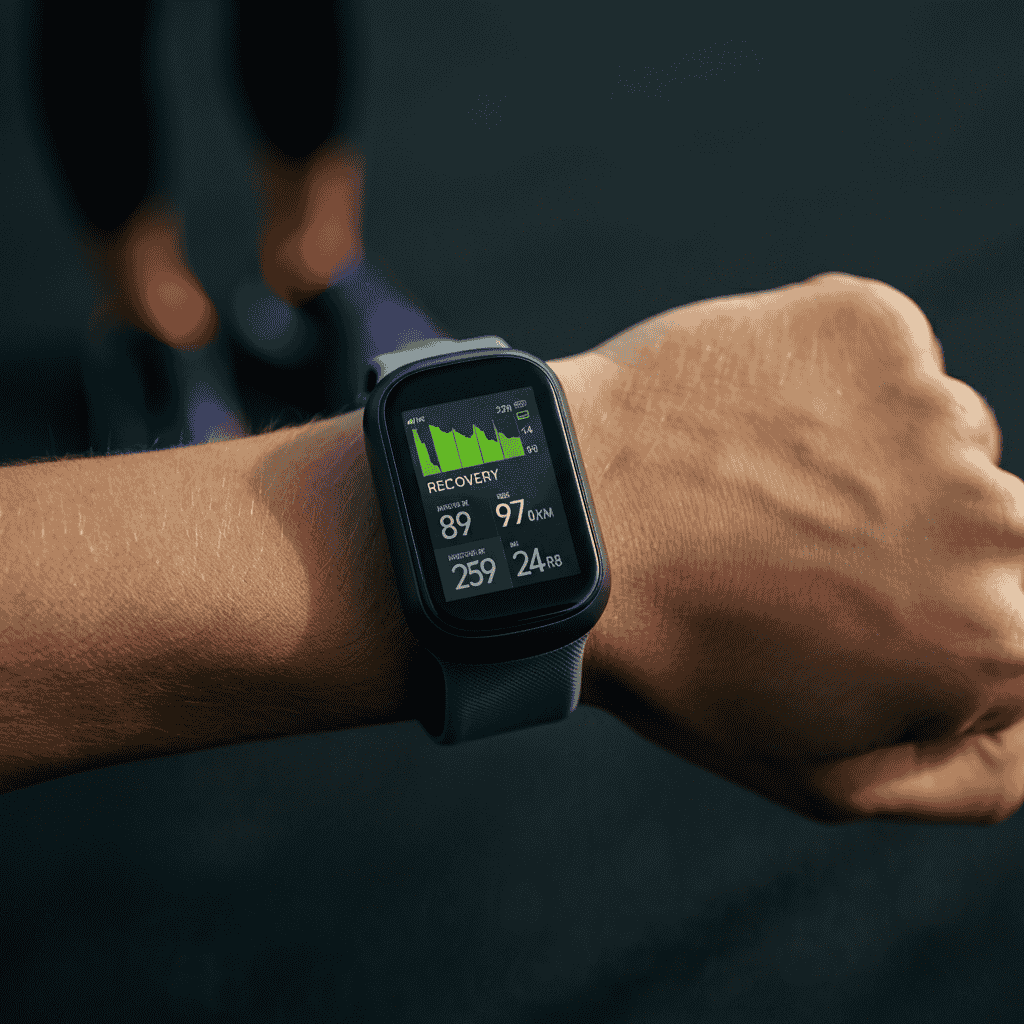
A good example would be the case of an overtrained swimmer who is constantly drained out. By operating an AI-designed recovery program based on her heart rate variability and sleep quality, we managed to improve her fatigue and consequent performance levels significantly. AI helps in reducing the risk of injury and optimizing their performance through personalized rehabilitation plans.
The Role of AI in Physical Therapy and Rehabilitation
AI has a revolutionary capability when it comes to vestibular therapy and rehabilitation in sports medicine. A unique application that I regularly use is AI-based movement analysis technology. In this respect, the devices pay attention not only to what is going awry but also if that unwanted behavior becomes a trend and could bring about re-injuries.
For example, I was once working with a pitcher from a local baseball team who was recovering from a shoulder injury, and our AI system picked up some insignificant changes in his throwing mechanics that human eyes couldn’t detect.
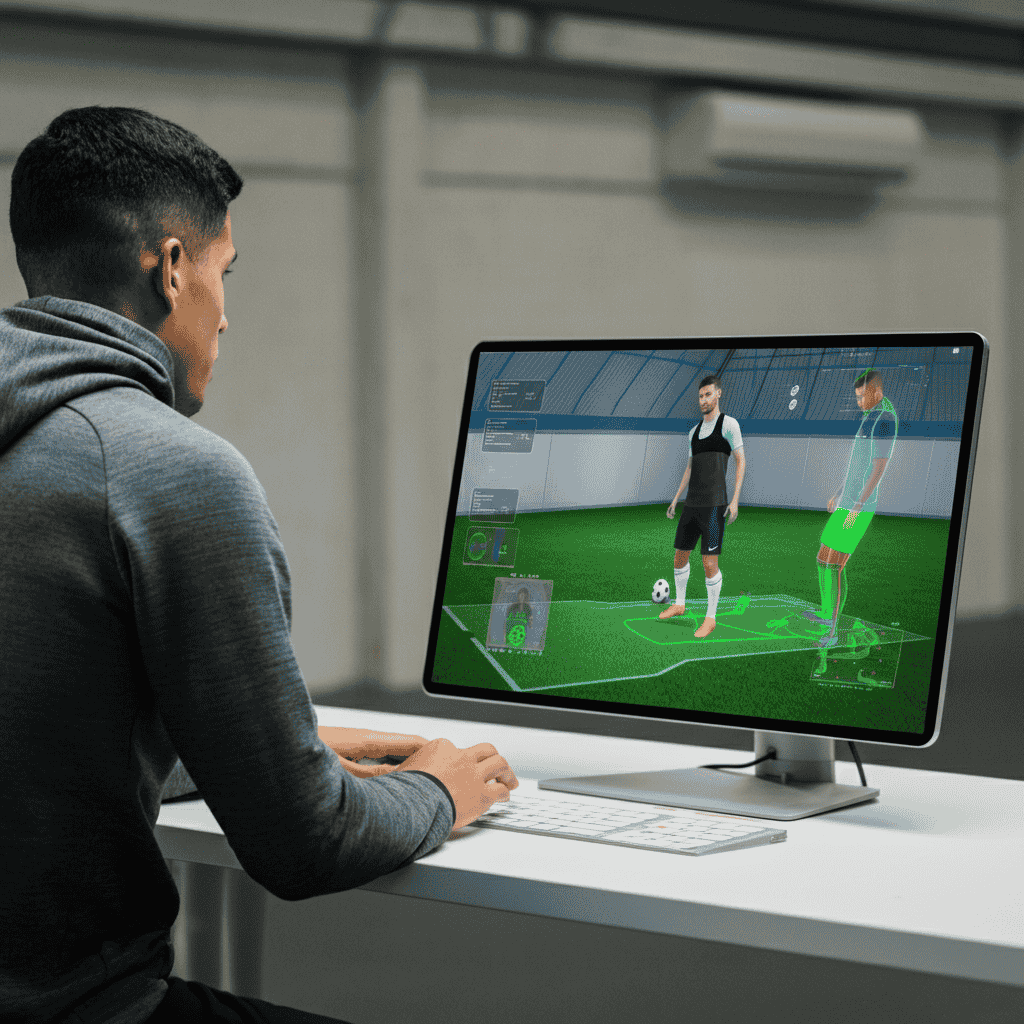
Those changes resulted in us being able to make instant fixes, and because of that, we witnessed the efficiency of his recovery rising significantly. This integration of AI into sports medicine has proven invaluable in shaping the future of sports recovery and rehabilitation.
The Future of Sports Medicine: Emerging AI Technologies
Afterward, I have to admit that the future of sports medicine will bring even more fantastic things that will be driven by the utilization of AI. The application of AI to medical imagery allows for the detection of injuries at a much smaller and more accurate scale, which in turn, makes earlier and more effective interventions a reality.
I’m especially interested in AI’s capabilities in personalized nutrition and recovery strategies. By getting insights from the athlete’s personal metabolic profile, training data, and recovery status through technological tools, we can then generate personalized treatment plans.
The application of this technology might also be stretched forward to manipulating their surroundings such as light and sound to quicken the recovery process and categorize the pain. AI developers are continually working to improve these technologies, ensuring that AI integration benefits patient care and the field of sports medicine.
Real-World Success Stories: AI in Sports Medicine
The broader part of my life in this profession saw AI as a major player in the successful treatment of sportsmen. An impressive case was a soccer player whose hamstring was the root of all his problems. In employing a field of uninitialized injury prevention technology, we were able to pinpoint and handle the root causes. Finally, the player managed to play a full season without any injury.
One of the cases that I remember best was of a girl named Vicky who was a swimmer. We used the AI stroke analysis method to improve her training regime. The AI insight to me is to tumble the drills which in turn brought a 2% success up for Vicky whose performance before was among the best.
Conclusion: The Game-Changing Potential of AI in Sports Medicine and Athlete Recovery
I am enthusiastic about AI integration in sports medicine, and I see a bright future. Of course, the problem with data privacy and also the need to secure the information about the athletes with the use of a robotic mechanism remains; however, the advantages are remarkable.
In that direction, the development of AI will help in coming up with effective mechanisms that help in the implementation of AI in sports medicine. From the optimization of injury prevention to personalized medicine and fast recovery, there will be a massive growth of AI in health and sport. We, the sports medicine practitioners, are required to make sure this new method works for the best of athletes and that ethical and effective use is ensured.
FAQs About AI in Sports Medicine
Is AI a technology that can be safely exploited in sports medicine, and is the recovery of the athlete guaranteed?
If the human is involved, the collaboration between the two will be a great success, as the system will search data more effectively, and it will also analyze information correctly, unlike the machines.
Can AI replace human doctors in sports injury prevention?
No, I don’t think AI is going to eliminate doctors from the medical scene. It is more like an aid to convince the doctors that their thinking is right.
What is the cost of AI technology for athlete rehabilitation?
In sports medicine, the implementation of AI technology varies depending on where it is to be used and the scale of its use. On the one hand, there are wearable AI devices at a modest price, and on the other, there are also relatively and fully integrated systems.

Hi! I’m Muhammad Shahzaib. As a content writer focused on technology, I constantly seek out trending topics to deliver fresh, insightful articles. My goal is to keep readers informed and engaged with the latest and emerging innovations in the tech world.